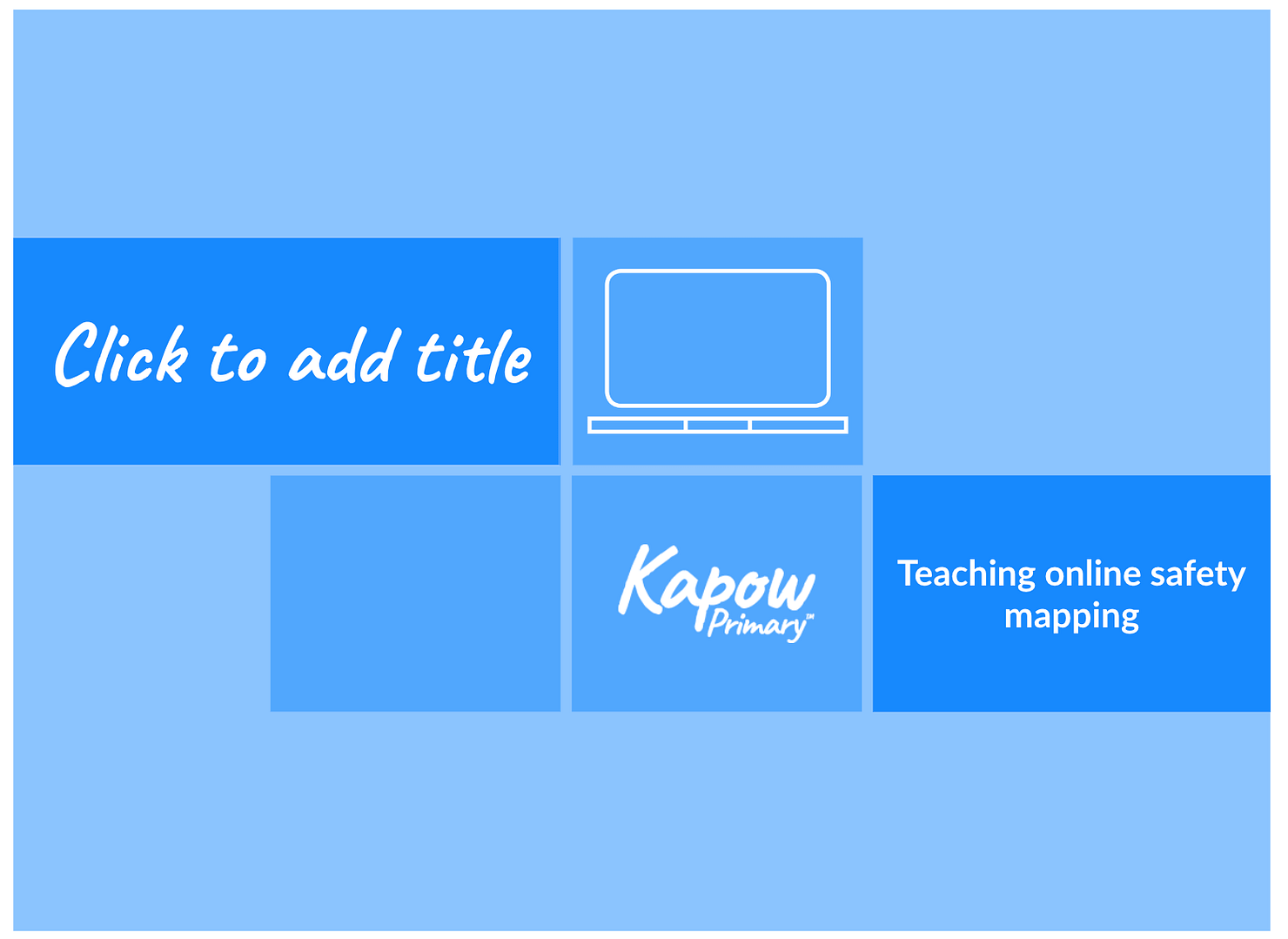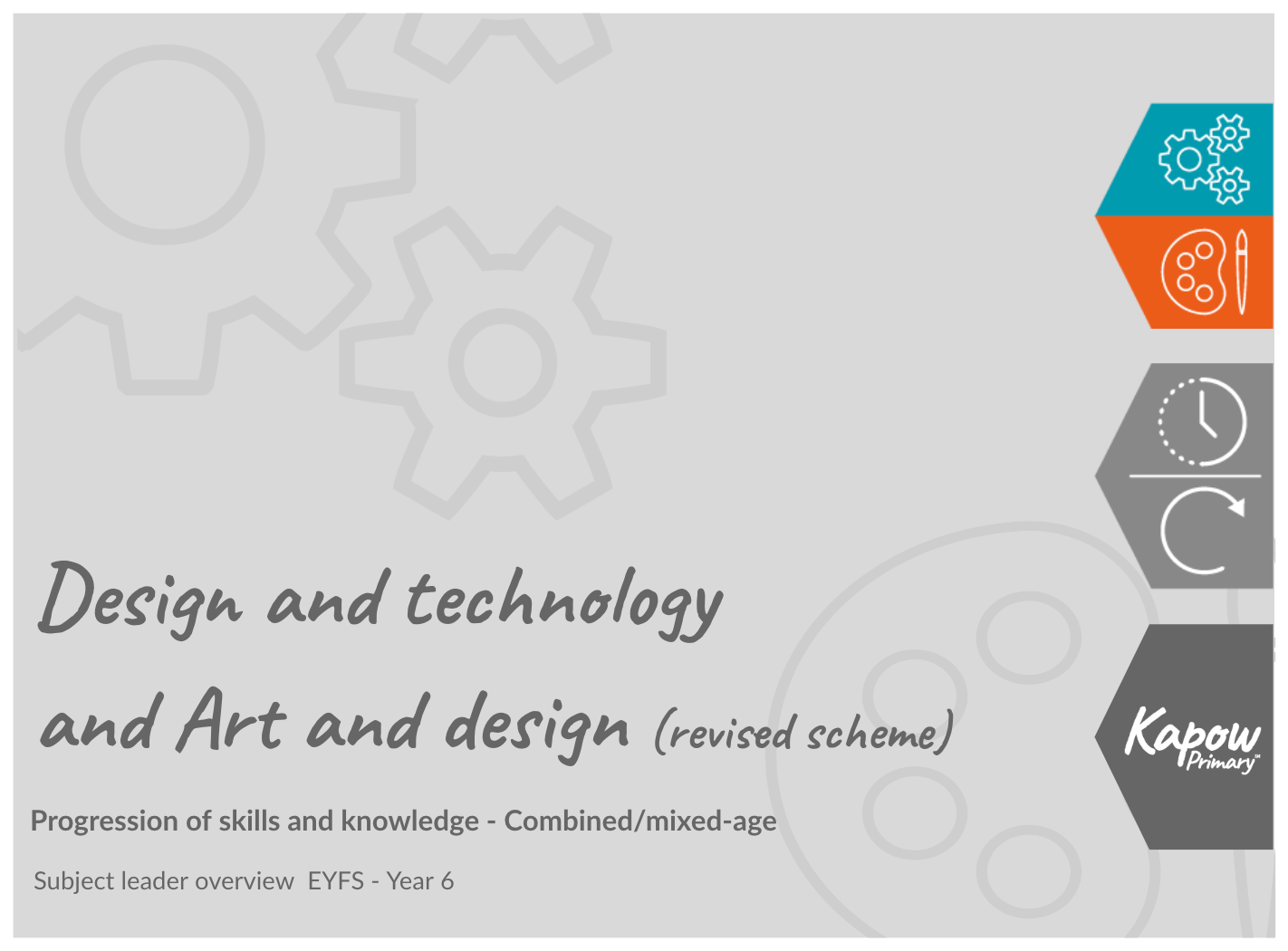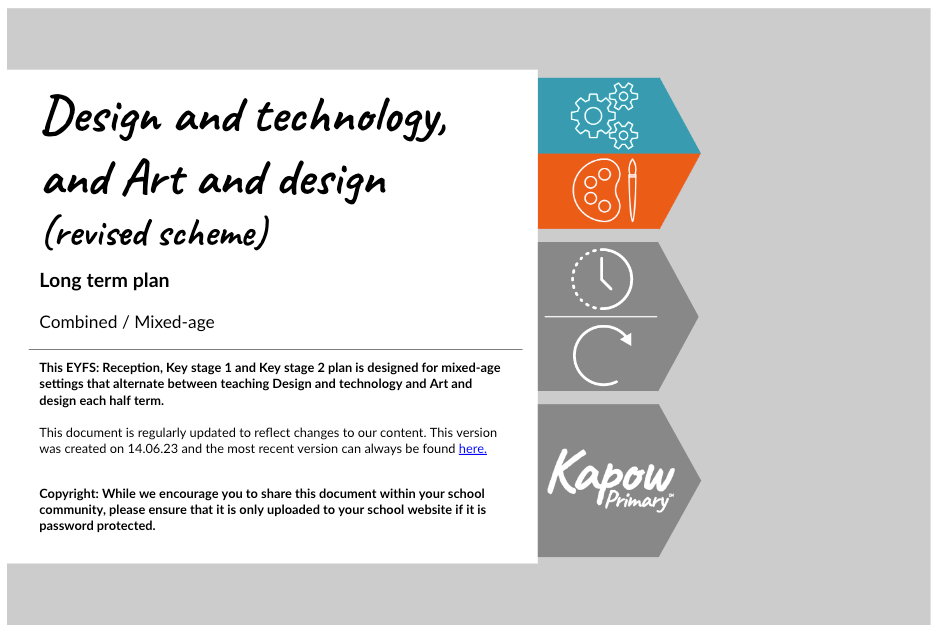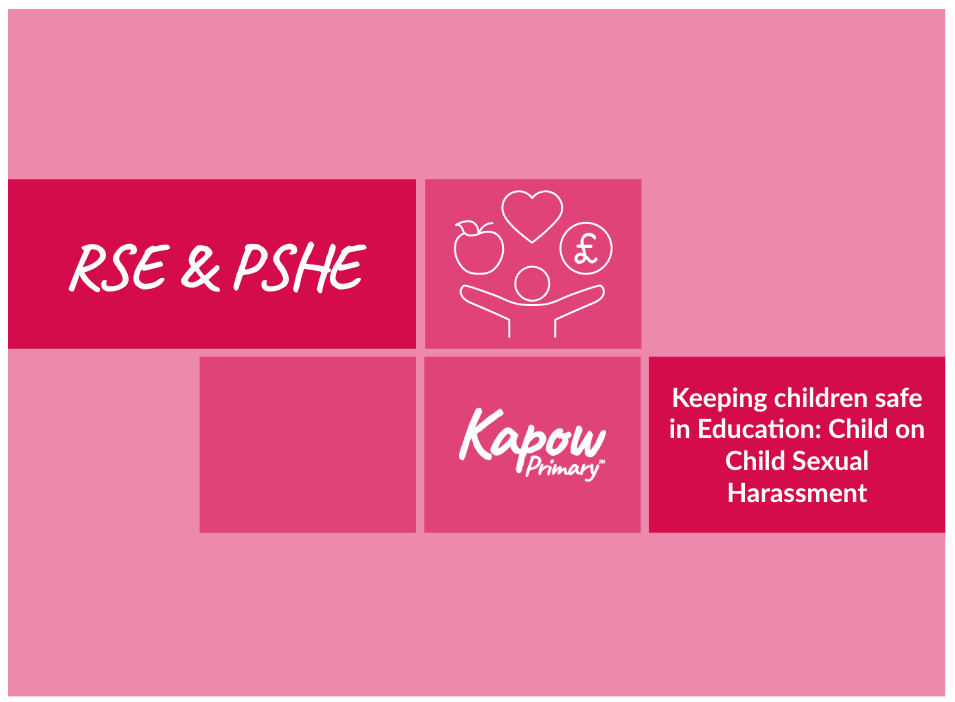year: Year 2
Music: Teacher knowledge audit
Music teacher knowledge audit relating to the Kapow Primary Music curriculum.
French: Teacher knowledge audit
Computing: KS1 Pupil voice
Computing: Teacher knowledge audit
Teaching online safety in schools mapping
Ensure that your pupils have the skills and knowledge they need to stay safe online, without adding to your teaching requirements. This document shows how existing Kapow Primary Computing lessons and RSE/PSHE lessons align to the Teaching online safety in schools guidance (non-statutory).
Design and technology and Art and design : Progression of skills and knowledge — mixed-age
This progression of skills and knowledge document is for those schools following our Design and technology and Art and design: Long-term plan – mixed-age.
Please note that schools must subscribe to both Art and design and Design and technology to have access to all the units referenced in this document.
Design and technology and Art and design (revised scheme): Long-term plan — mixed-age
*Now updated to reflect the newly published Drawing units*
This document is a mixed-age version of our very popular long term planning, which allows schools to alternate between the teaching of Design and technology and Art and design half-termly.
Please note that schools must subscribe to both Art and Design and Design and technology subjects to have access to all the units referenced in this plan.
For mixed-age settings, we have organised the units into two-year cycles, ensuring that progression is still appropriate, no matter the order that children experience Cycle A and Cycle B.
To accompany this document, we have produced a DT and Art: Progression of skills and knowledge- Mixed-age.
Keeping children safe in Education: Child on Child Sexual Harassment
Kapow Primary’s approach to addressing sexual harassment in schools builds on the requirements for RSE, which are outlined in the statutory guidance set out by the DfE: Relationships Education, Relationships and Sex Education (RSE) and Health Education.
Kapow Primary’s RSE & PSHE curriculum already covers boundaries, respectful relationships, permission seeking, consent and giving in relationships and reporting concerns in line with the Relationships and Sex Education and Health Education guidance, 2021 which outlines what pupils should know ‘by the end of primary school’ (see RSE & PSHE: Statutory guidance mapping document).
However, we have now broken some of the relevant targets down further to show progressive knowledge outcomes across the primary phase that prepare pupils for further learning about sexual harassment in secondary school.




